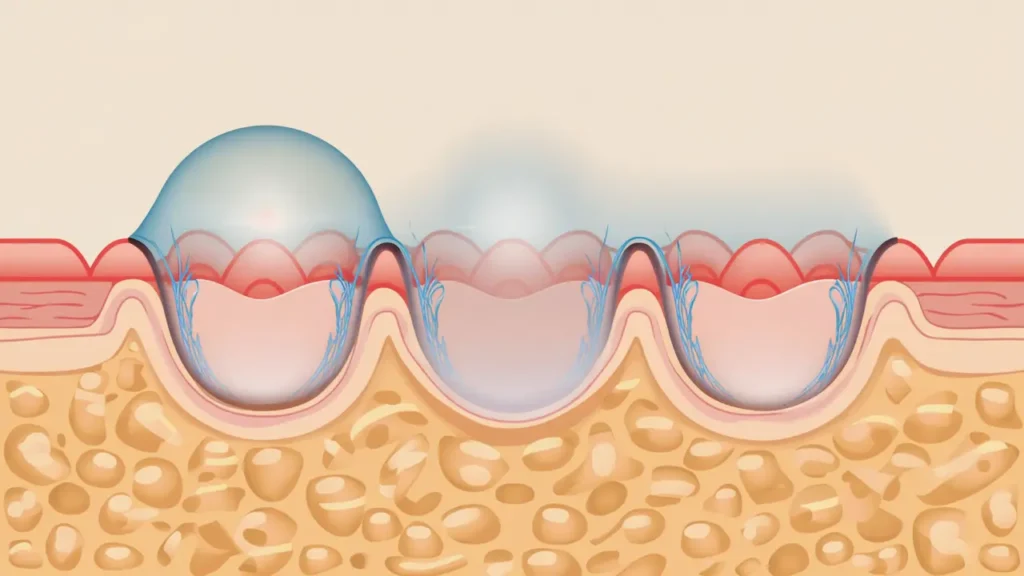Radial Keratotomy (RK) was the LASIK of the 1980s. Thousands of people in Israel and worldwide underwent the procedure, delighted by the promise of life without glasses. The surgery involved making radial incisions in the cornea to change its shape and stabilise vision. Many left the clinic feeling that their lives had been transformed.
Decades later, however, a different picture emerges. The cornea is a delicate, flexible tissue that doesn’t stay stable forever. Incisions made thirty years ago are still affecting vision today, leading to distortions, chronic dryness, glare and gradual loss of clarity.
What happens to the eye after RK?
Initially the results seemed promising, but over many years patients report:
- Fluctuating vision: clear in the morning but blurry by evening, or vice versa.
- Glare and halos: especially when driving at night or facing headlights.
- Corneal irregularities: the cornea weakens and becomes uneven, causing persistent blur.
- Chronic dry eye: due to nerve damage and disruption of tear production.
In simple terms, the cornea no longer functions naturally, and many patients find themselves fighting again for basic vision – and in most cases not even glasses help.
Why does this happen?
A cornea that has been cut multiple times loses its biomechanical stability. Unlike modern laser surgeries, which are controlled and precise, RK often involved dozens of incisions (sometimes just two or three, but still disruptive) that permanently altered the structure. Over time – and especially with natural ageing of the tissue – these cuts lead to unpredictable changes. The result: an eye that once saw without glasses for a period now functions in an unstable way.
What solutions exist today?
The good news is that modern medicine knows how to handle this complexity. There is no way to “reverse” the old surgery, but there are advanced tools that allow vision to be rehabilitated:
Scleral lenses – These large, rigid lenses are filled with fluid and sit on the sclera (the white of the eye) rather than on the cornea itself. They bypass the existing distortions, create a new optical surface and provide sharp, stable vision. The continuous fluid layer between the lens and the cornea also significantly relieves dry eye.
EyePrintPRO – When standard lenses aren’t enough, EyePrintPRO comes into play. This unique technology is based on an eye impression. A special material is used to take a mould of the eye and then scanned, creating a 3D model of every bump and groove. A completely custom lens is manufactured based on that model. This solution is particularly suited to post‑RK patients because no two corneas are alike after so many cuts, and sometimes very large lenses are required.
Advanced dry‑eye treatments – In addition to lenses, specialised therapy may be needed: preservative‑free artificial tears, treatment of blocked glands or technologies like IPL that stimulate secretion.
Corneal transplant – In very rare and severe cases where lenses cannot restore function, a corneal transplant may be considered. This is a last resort, not a first choice.
A real‑life example
G., now 80, underwent RK in the early 1980s. For years he managed without glasses. In the last decade, however, he developed persistent blur and glare. Glasses didn’t solve the problem and he arrived at our clinic frustrated. After fitting a large, custom scleral lens, his vision stabilised and the dryness almost disappeared. “For the first time in years, I can drive at night without fear,” he says. The lens allowed him to return to normal vision, and even without the lens his vision improved thanks to corneal protection.
The emotional side
Many who underwent RK feel “stuck in the past.” The promise of perfect vision didn’t materialise, and after years of frustration it’s hard to believe there is a solution. The reality today is different: technology exists and eye care professionals know how to provide precise relief. Restoring a sense of freedom and confidence isn’t just about sharper vision – it’s about quality of life.
Frequently asked questions
- Does RK always fail over the years? Not always, but in most cases there is a gradual decline.
- Can modern laser surgery fix old RK? Generally not; the cornea is too weak. Custom lenses are the main solution. At MyClinic we work with leading ophthalmologists to assess whether a complementary procedure is possible.
- How long does it take to get used to scleral lenses? Improvement is usually immediate. Proper training and regular follow‑up ensure stability for years.
- Is EyePrintPRO suitable for everyone after RK? Not in every case, but it is one of the most accurate options for complex situations.
Summary
RK was a breakthrough of its time, but its long‑term consequences are complex. The good news is there are solutions: scleral lenses, EyePrintPRO, advanced dry‑eye treatments and, in rare cases, corneal transplants. The key is not to stay with frustration but to seek a personalised evaluation. At M’Eye Clinic we tailor solutions so you can forget about the problem in your eyes and move on with life.

